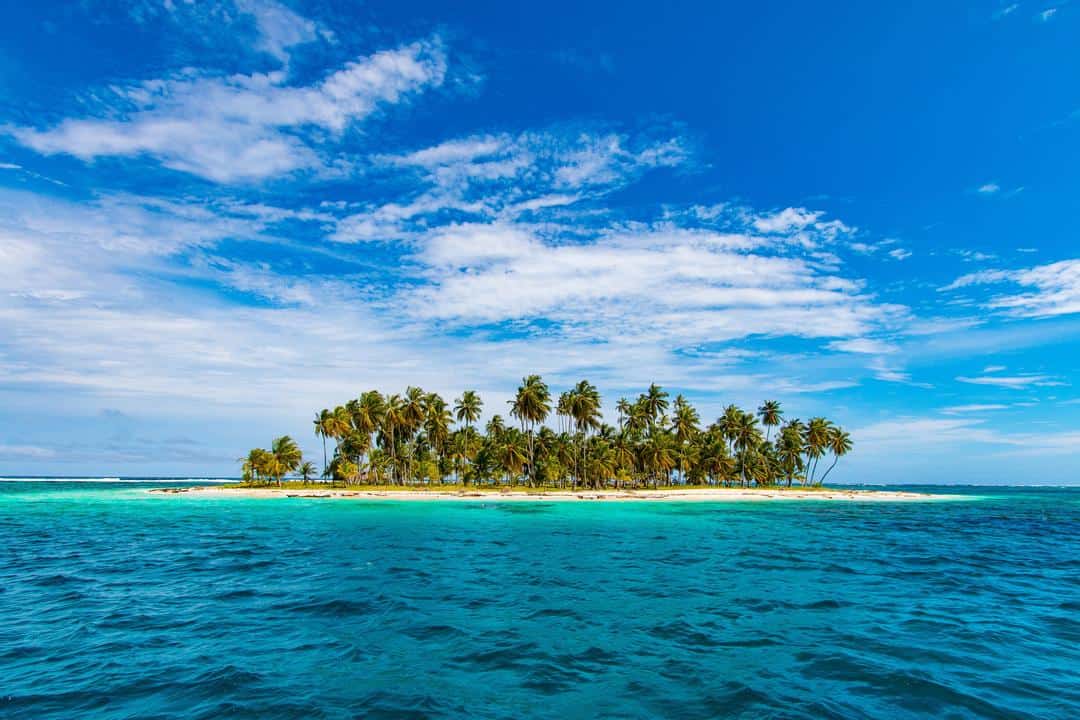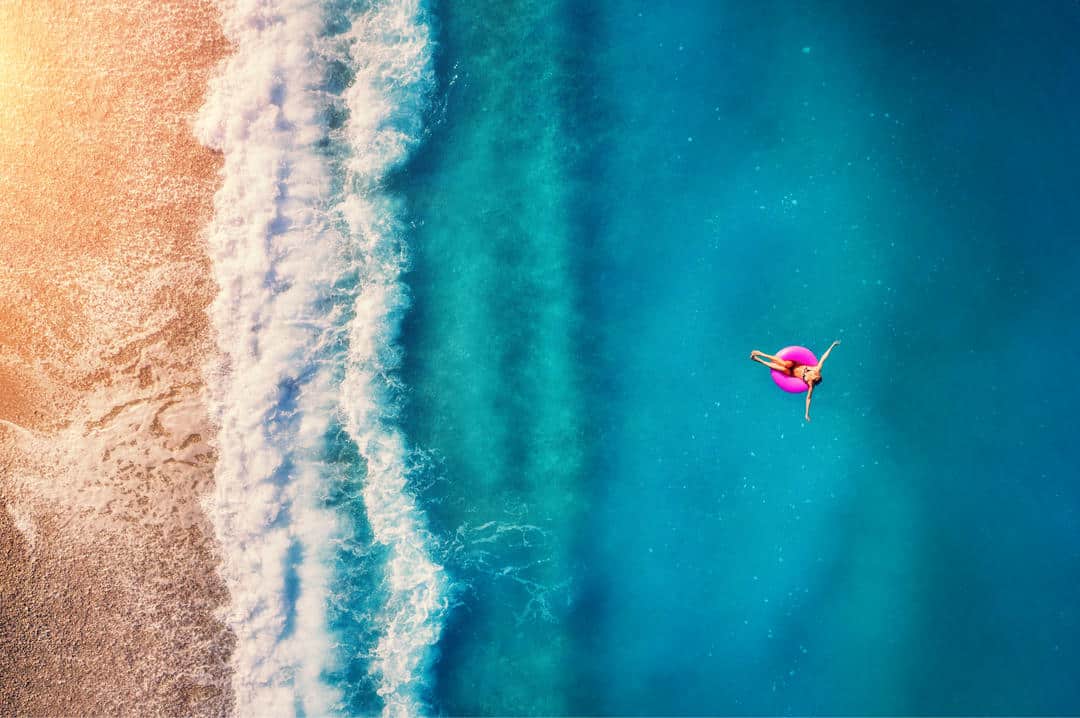What unites the Maldives, the Greek beach of Egremni, the volcanic Crater Lake in the USA and the Japanese island of Miyako? First of all, it is the incredible color, purity and transparency of the water, which shimmers with all shades of blue – turquoise, aquamarine, azure, cobalt. Traveling to these places promises not only excellent relaxation, but also the opportunity to reunite with nature and find inner peace. Psychologists believe that the blue-blue palette has a beneficial effect on the human psyche, promotes the development of imagination and good sleep. We’ve profiled 20 amazing places with the world’s bluest water to help you plan an exciting trip.
Egremni Beach, Zakynthos island, Greece
Egremni is the most beautiful beach not only on the Greek island of Zakynthos, but throughout the entire Mediterranean. It is surrounded by steep limestone cliffs overgrown with bushes. From their top there is a stunning view – crystal clear turquoise water and a milky white shore strewn with small pebbles. Previously, it was possible to go down to the coast via a steep staircase of 350 steps, but in 2015 it was destroyed by an earthquake. Now, to get to Egremni beach, you need to take a boat to Nidri or Vasiliki.
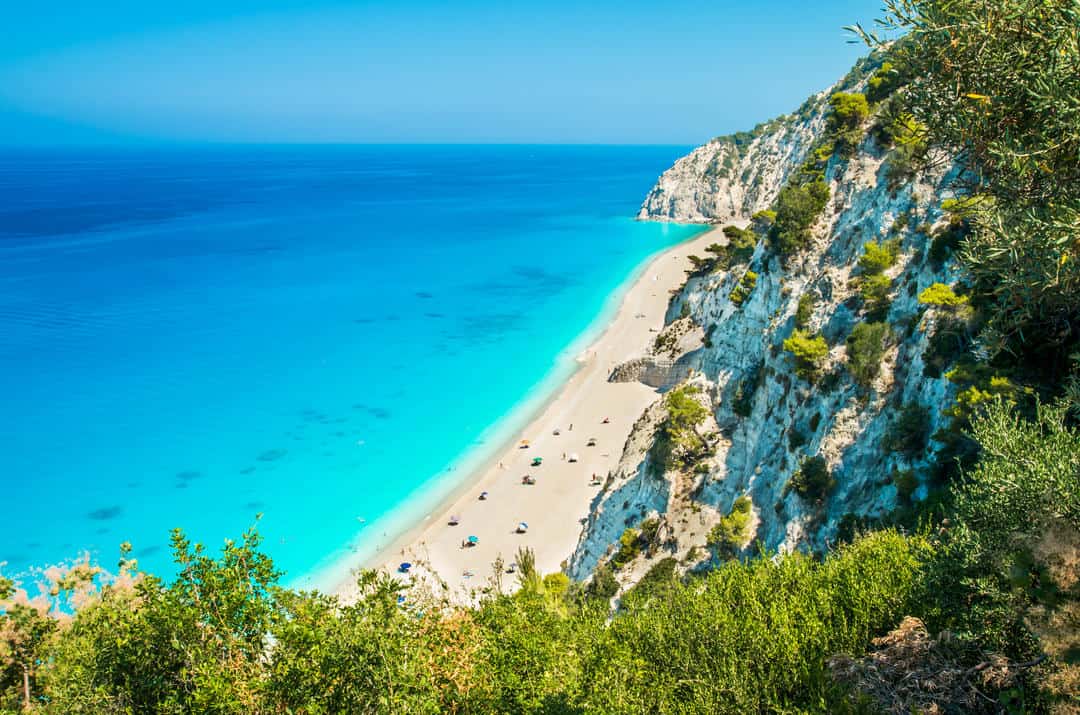
Maldives
The Maldives is a group of coral islands washed by the warm waters of the Indian Ocean. The seabed here is covered with fine white sand. Reflecting from it, the rays of the sun illuminate the water from the inside, making it shimmer in all shades of turquoise. Travelers who were lucky enough to visit this paradise claim that the Maldives has the bluest water in the world. It is clean and transparent, making the resort ideal for snorkeling and diving. The underwater world of coral atolls is very diverse. The Maldives is home to many rare species of fish, and huge manta rays swim here in whole schools. Some villas stand on stilts directly in the ocean, and the floors in the rooms are transparent. Guests can observe marine life without leaving home.
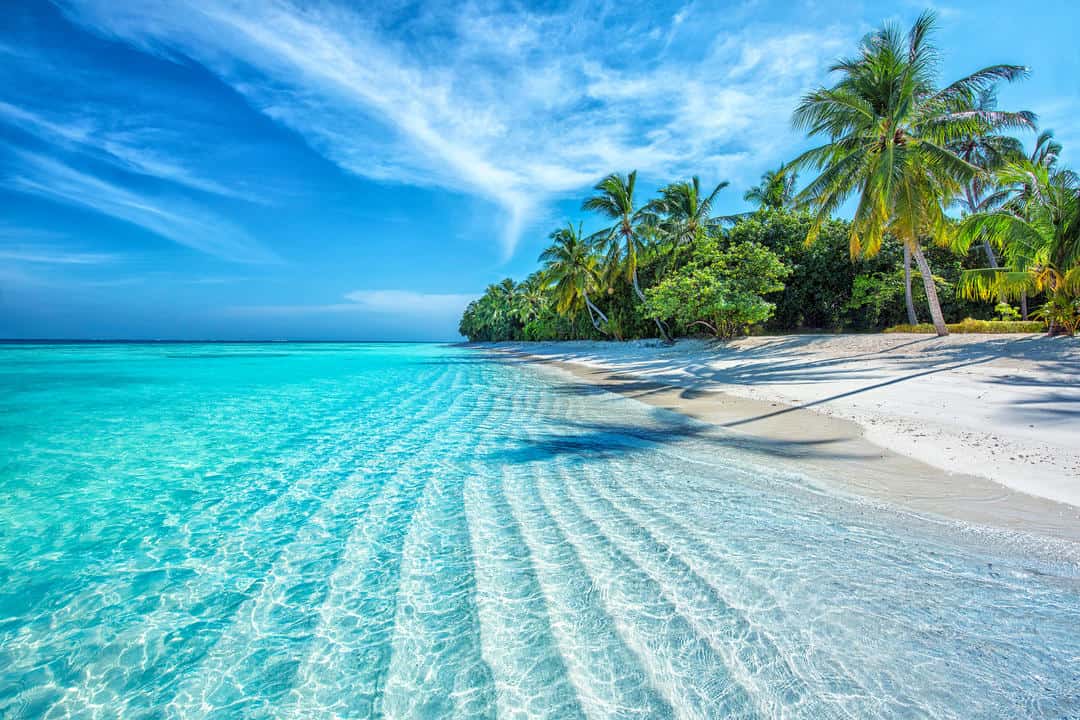
Exuma Islands, Bahamas
The Exuma Archipelago in the Bahamas consists of 365 small islands. The largest are Great Exuma and Little Exuma, where the bulk of the population lives. This place is considered one of the most beautiful in the world. If you look at the sea from above, you can see the whole range of blue shades – light in the numerous shallows and darker in the depths. This effect is achieved due to the saturation of the water with calcium carbonate and the reflections of the sun reflecting from the bottom. Grottoes, caves and reefs, as well as a rich underwater world, attract divers, snorkelers and yachtsmen to the Exuma Islands. The local bays were often used as hiding places by pirates. Underwater, the remains of their ships are still preserved, among which schools of colorful fish swim.
One of the attractions of the Exuma archipelago is Pig Island. Its beach is home to several dozen pigs and piglets who love water treatments. The animals are very friendly. They boldly swim up to tourists’ boats, try to climb on board and take food right out of their hands. It is unknown where the pigs came from on the island. According to one version, they were brought by pirates; according to another, the animals survived a shipwreck. But there is an opinion that they were brought here specifically to attract tourists.
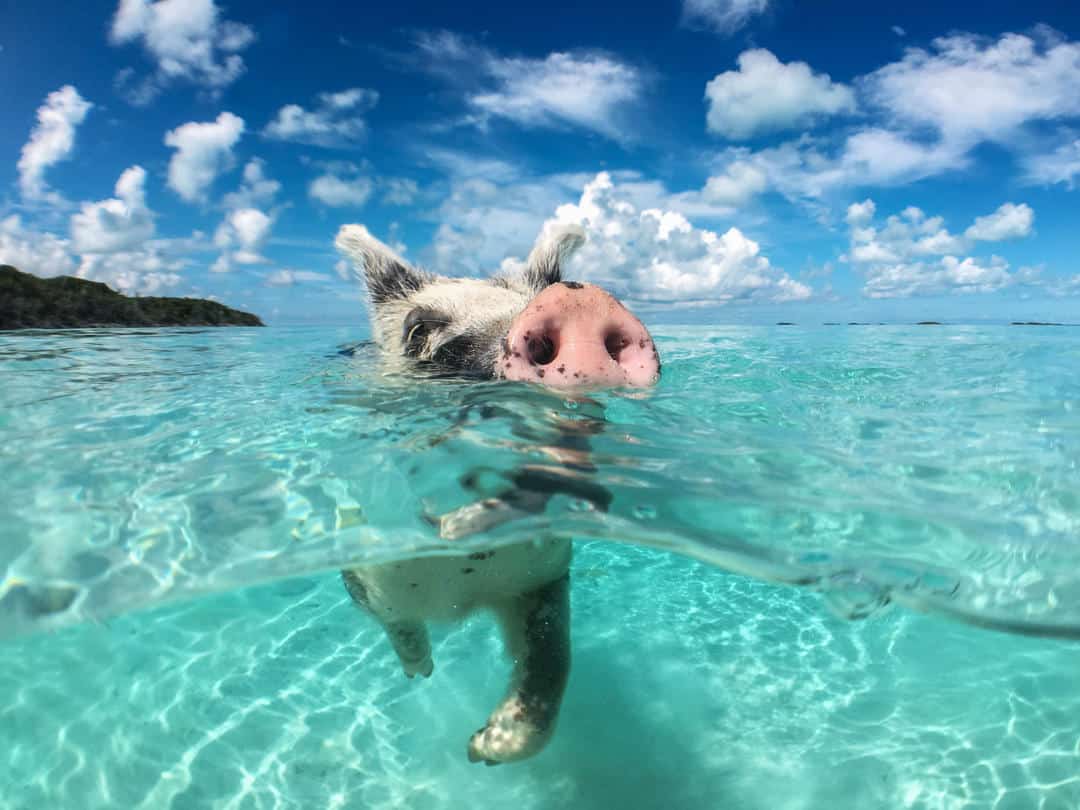
Navagio Beach, Greece
Navagio Bay is one of the most photographed beaches in Greece, a protected corner of the island of Zakynthos. The secluded cove is surrounded on three sides by high limestone cliffs. The white sand that covers the small beach contrasts effectively with the piercing blue water of the Ionian Sea. It is so transparent that the bottom is visible even at depth. The beach got its name Navagio (“shipwreck”) after a storm washed ashore the smuggling ship Panagiotis, which sank in 1980. Now it has become a local landmark. The cliffs surrounding Navajo Beach are loved by fans of rope jumping, who fearlessly jump down from a height of 250 meters.
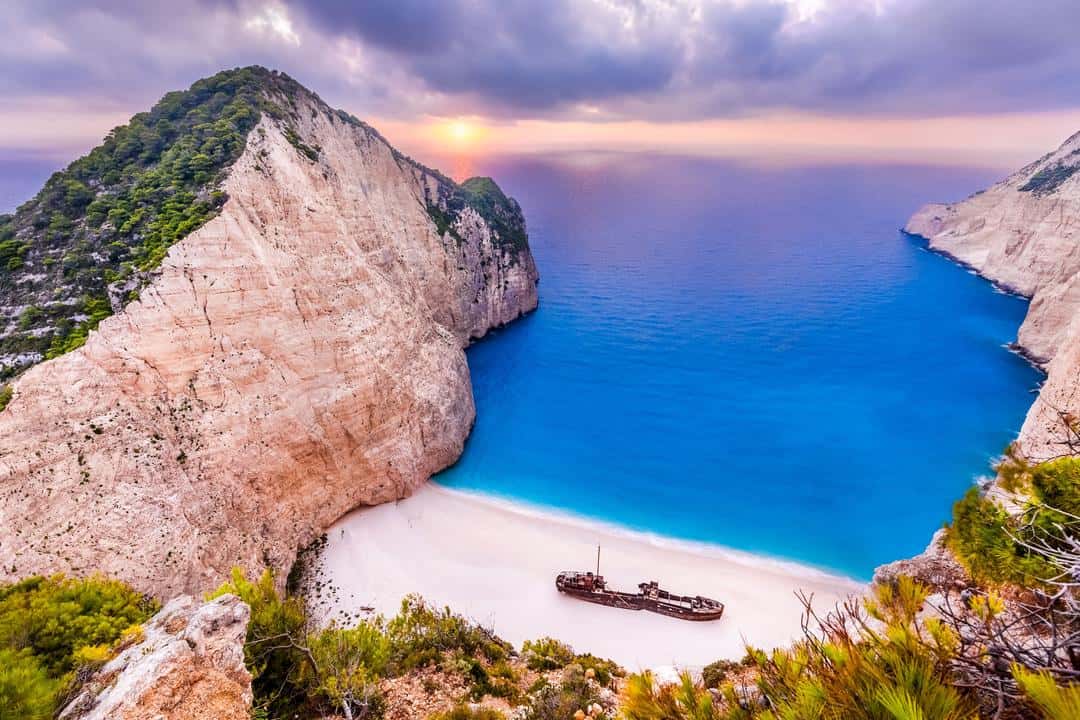
Five-Flower Lake, China
Lake of Five Colors, located in the Japanese Jiuzhaigou Nature Reserve, is considered one of the most beautiful in the world. The reservoir received its name for an interesting feature – the change in color of the water throughout the year. Most of the time it has an azure blue tint, but periodically it turns dark green, yellow, and turquoise. This happens due to the significant number of hydrophytes (aquatic plants) and the high content of calcium carbonate. The lake of five colors is one of the places with the cleanest water in the world. Divers who explore it have an excellent view within a radius of 40 meters.
Five-Flower Lake is shrouded in many secrets. It never dries out in the summer, unlike others, and does not freeze in the winter. Professor Fan Xiao, who studied the reservoir, believes that this is explained by the presence of hot springs. However, they have not yet been discovered due to the large number of tree trunks that cover almost the entire bottom of the lake. But during the research, divers found an underwater cave and a tunnel connecting Five-Flower Lake with a neighboring reservoir.
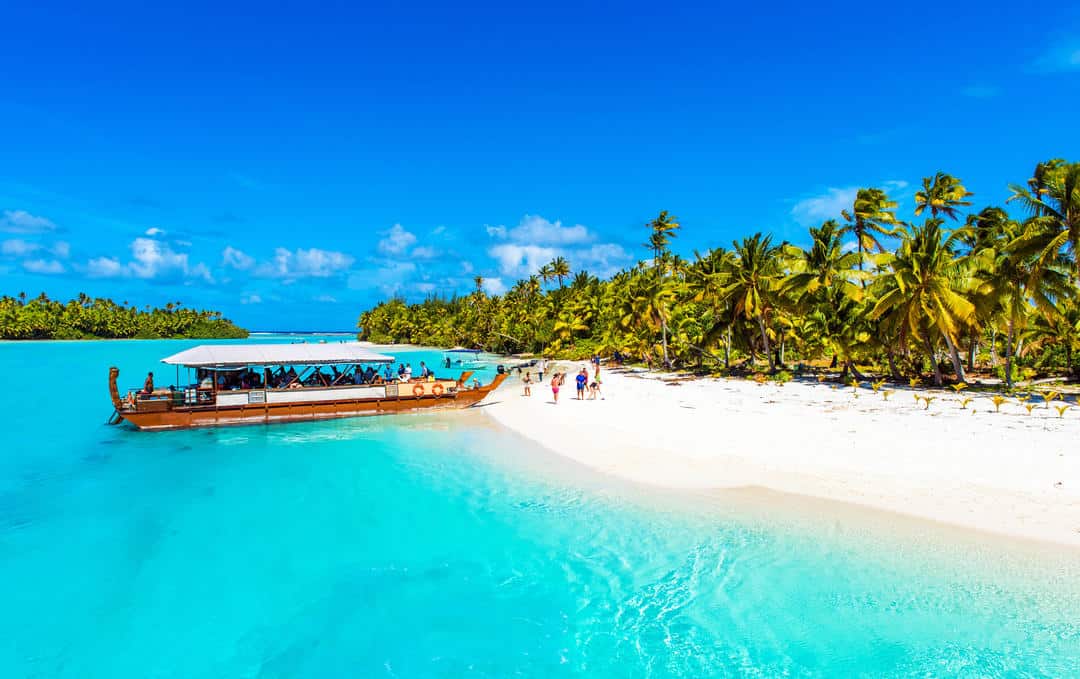
Peyto Lake, Canada
Canada’s most beautiful Peyto Lake is located in Banff National Park, in the Canadian Rockies. The reservoir lies at an altitude of 1860 meters. Its shape resembles the head of a huge wolf and is the most photographed in the country. Peyto Lake has incredibly turquoise water – like off the coast of tropical islands. The thing is. that when mountain ice melts, so-called “glacial flour” gets into it – very fine sand formed when glaciers grind rocky rock. Minerals dissolved in water give it an unusual color. An excellent panoramic view of Peyto Lake opens from the Bow Summit observation deck.
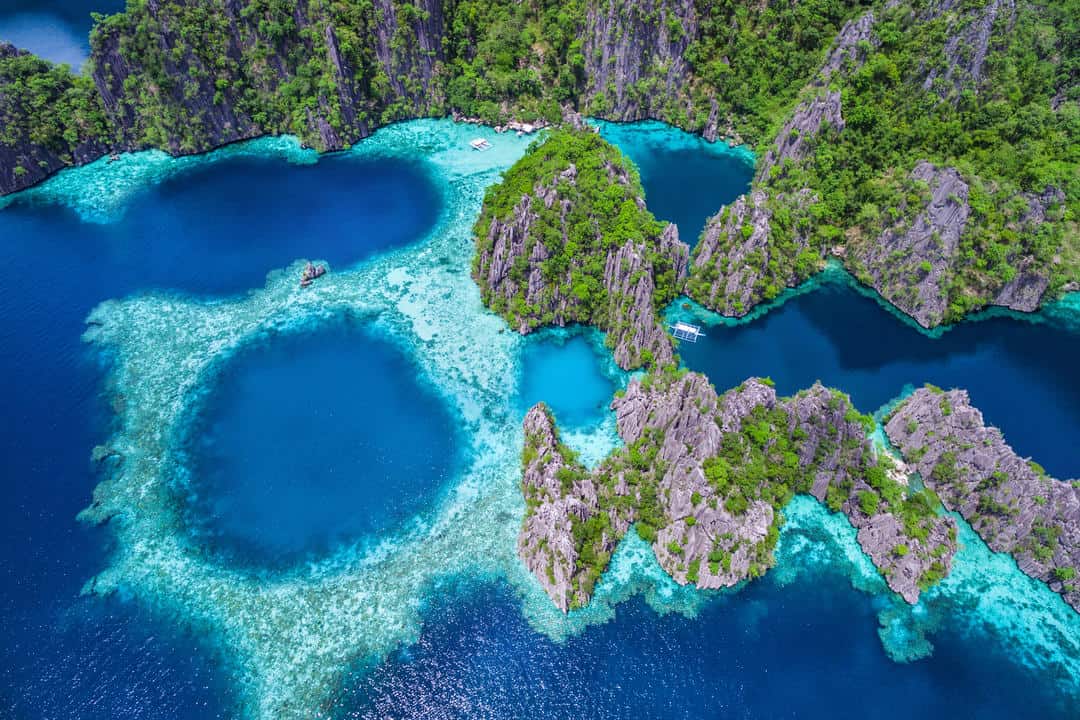
Aitutaki Atoll, Cook Archipelago
Aitutaki is the second most popular island among tourists in the Cook Archipelago. It is of mixed volcanic and coral origin. The beaches here have the whitest sand in the world, and the coastal waters are known for their crystal clearness. From a small hill in the center of the atoll there is a stunning view of the bright blue lagoon. Getting to this piece of paradise is quite difficult. The closest continent to it is Australia, but it is also located at a distance of 5000 km. Therefore, not everyone can afford a holiday on Aitutaki. There are no luxury hotels here, but their absence is fully compensated by the beautiful scenery and excellent deserted beaches.
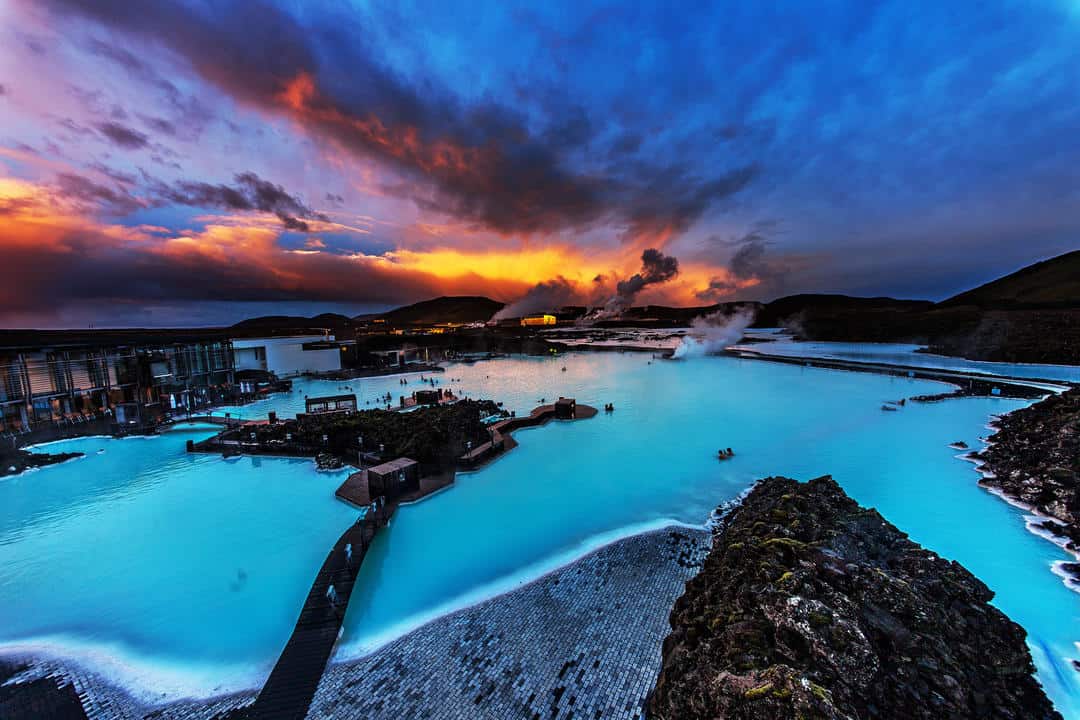
Palawan Island, Philippines
Nestled between the South China Sea and the Sulu Sea is the island of Palawan, known for its stunning beaches and rainforests. Next to it there is a protected area of coral reefs 3000 km long. The island’s waters are home to many rare plants, fish and marine animals, including the endangered dugong. Transparent, bright blue water, as well as a rich underwater world, make Palawan a real Mecca for divers. The best places for diving are Honda Bay and Tubbataha Reef. There are many sunken ships here that have been lying on the bottom since the Second World War.
On May 7, 1934, the world’s second largest pearl was found on the island of Palawan. Its diameter is 23.8 cm, weight is 6.37 kg. The jewel, called the Pearl of Lao Tzu, is valued at $40 million.
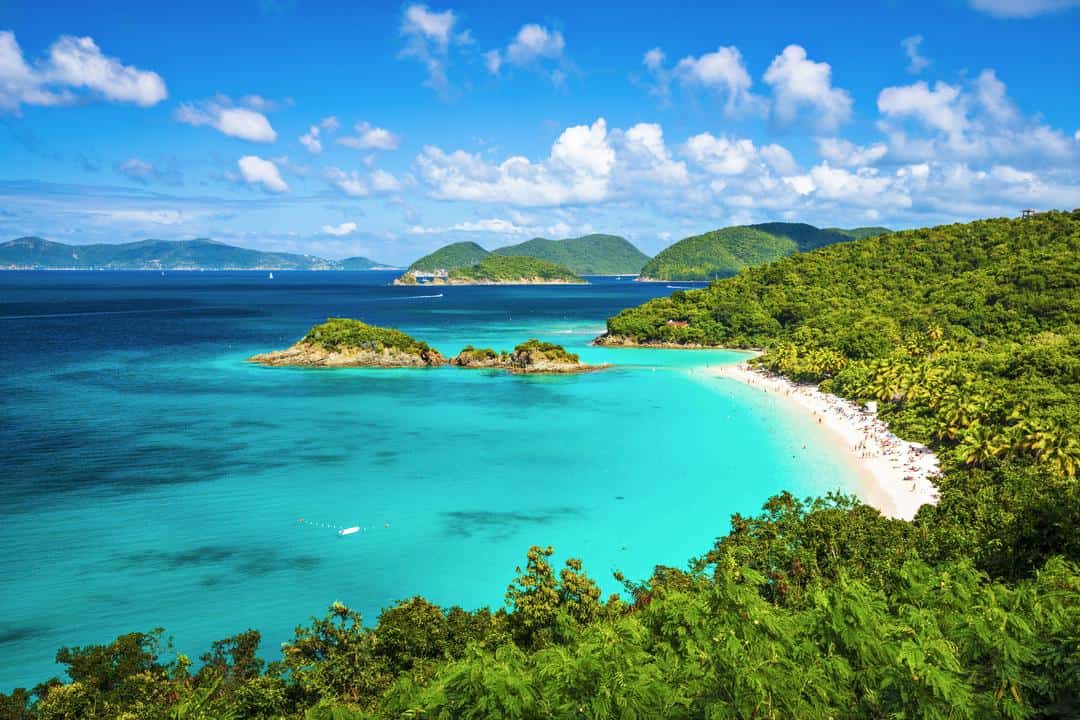
Blue Lagoon, Iceland
The popular geothermal resort Blue Lagoon, located on the Reykjanes Peninsula in Iceland, is included in the list of TOP 25 wonders of the world by National Geographic magazine. This is not a natural, but a man-made lake. It was formed next to the Svartsengi geothermal power plant, which uses steam from underground hot springs to generate electricity. The water, cooled to 37-39 degrees, flows into the natural bowl of the lava field. Due to the high content of silicon dioxide, which refracts the sun’s rays, it has azure, soft blue or milky shades, depending on the weather. The mineral-rich water of the Blue Lagoon, as well as the white clay that covers its bottom, have healing properties. Therefore, a modern SPA complex was built next to the thermal pool. They also opened a store here that sells natural cosmetics from the Blue Lagoon brand, lava jewelry and products made from Icelandic wool.
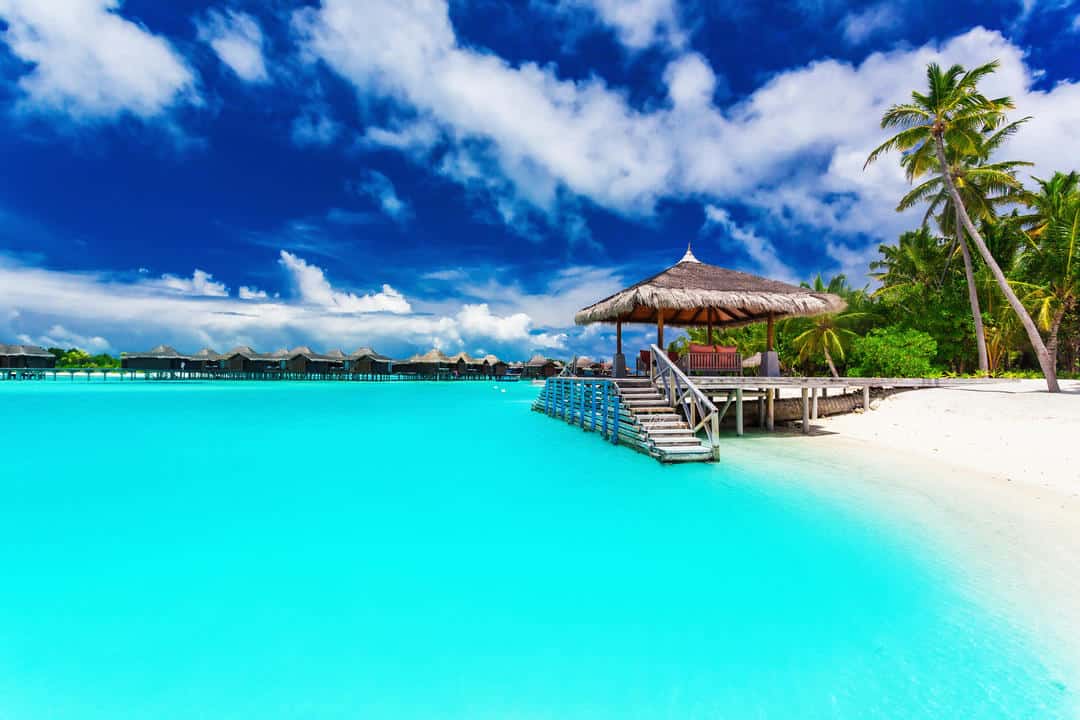
Trunk Bay Beach, Virgin Islands
Trunk Bay is the most popular and beautiful beach on St. John, part of the Virgin Islands National Park. Tourists here will find warm turquoise water, fine white sand, the shade of coconut trees, and a coral reef inhabited by a large number of marine life. This is a great place for snorkeling, diving and underwater photography. An underwater trail 205 meters long has been created for reef explorers. Special signs on it help to identify the types of fish and corals. Those who are tired of a relaxed beach holiday can go for a walk in the park or explore the ruins of sugar plantations that have been preserved since the colonization of the island.
